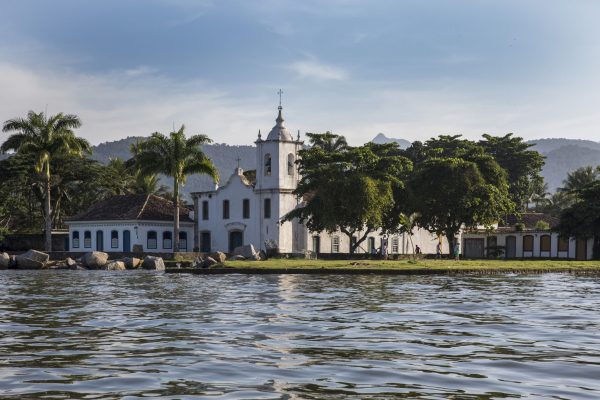
From the home of the stately king penguin and yellow-nosed albatross, to the territory of the iconic Persian leopard, to Iceland’s volcanic fire and glacial ice, an extensive display of the globe’s biodiversity has just been inscribed in UNESCO’s World Heritage List.
The World Heritage Committee convened in early July in Baku, Azerbaijan, and added 29 sites to the List, which now numbers 1,121 places worldwide. Most represent unique cultural phenomena, such as the ruins of the ancient city of Babylon in Iraq – one of the most anticipated additions this year.
But four natural sites in very different parts of the planet were also inscribed for what UNESCO describes as their “important and significant natural habitats for in-situ conservation of biological diversity, including those containing threatened species of outstanding universal value from the point of view of science or conservation.” Plus one ‘mixed’ property in Brazil was added, for its rich biodiversity and cultural significance both.
A spot on the World Heritage List brings additional support for conservation to the sites, which are judged to provide “outstanding value to humanity,” as well as more protection in confronting a number of threats, from armed conflict to poaching to pollution to climate change.
“You can actually do a lot in terms of climate change adaptation and mitigation,” says Mechtild Rössler, director of the UNESCO World Heritage Centre in Paris. “A well-run World Heritage Site is more resilient to climate change because the site manager can identify threats and try to address these issues. This inscription is the highest recognition that a site can get.”
Without further ado, these five new UNESCO World Heritage Sites are:
This territory includes the Crozet Archipelago, the Kerguelen Islands, Saint-Paul and Amsterdam Islands and 60 small sub-Antarctic islands, which together support one of the highest concentrations of birds and marine mammals in the world, including the planet’s largest population of king penguins and yellow-nosed albatrosses.


This World Heritage Site includes 10 central volcanoes, whose unique interactions with glaciers and ice caps create an ever-changing display of rivers, sandur plains and canyons. Some of the groundwater fauna found here has also survived since the Ice Age.



With portions dating back some 50 million years, these forests survived the Ice Age and once covered much of the region due to their warmer climes. They continue to boast an immense array of rare biodiversity. To date, 180 bird species and 58 mammal species have been recorded living among such rare trees as alder, elm and wild cherry, including the Persian leopard (Panthera pardus tulliana).

The mudflats serve as growth areas for many species of fish and crustaceans, while the intertidal areas are a crucial stopping point for many migratory birds, including some of the world’s most endangered.



At the foot of the Serra da Bocaina mountain range, Paraty is extraordinarily well-preserved, with buildings lining its cobblestone streets dating back to the 17th century, the beginning of Brazil’s gold rush and slave trade that ensued. Four protected areas of the Brazilian Atlantic Forest fall within the bounds of this site, with Ilha Grande home to one of the most pristine remnants of the original forest, as well as an impressive variety of rare animals such as the jaguar (Panthera onca), the white-lipped peccary (Tayassu pecari) and several different primates.


Finally…
…thank you for reading this story. Our mission is to make them freely accessible to everyone, no matter where they are.
We believe that lasting and impactful change starts with changing the way people think. That’s why we amplify the diverse voices the world needs to hear – from local restoration leaders to Indigenous communities and women who lead the way.
By supporting us, not only are you supporting the world’s largest knowledge-led platform devoted to sustainable and inclusive landscapes, but you’re also becoming a vital part of a global community that’s working tirelessly to create a healthier world for us all.
Every donation counts – no matter the amount. Thank you for being a part of our mission.
Want to get the latest climate and environmental stories in your inbox? Sign up here to stay in the loop.
Every week, we’ll send you our top feature story. Discover green innovations, social justice issues, environmental history and more.
Tune into our live monthly podcast with the world’s unsung environmental heroes. Sign up to find out when the next episode drops.
Once a month, get informed with our 5-minute round-up of the latest environmental headlines from around the world.
You've been successfully added to our newsletter list. Stay tuned for the latest climate stories and updates.

Celebrate World Bee Day 2024 with this quiz that will test your knowledge of these weird and wonderful insects.
Boreal forest is the world’s largest terrestrial biome, but it’s now under threat from climate change. Here’s what we can do about it.
In this news roundup: 40% of plant species at risk of extinction, China pledges carbon neutrality by 2060, and mushroom coffins from Delft.